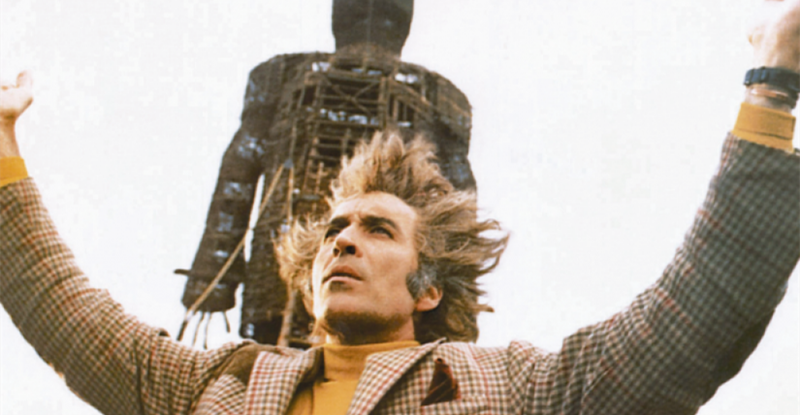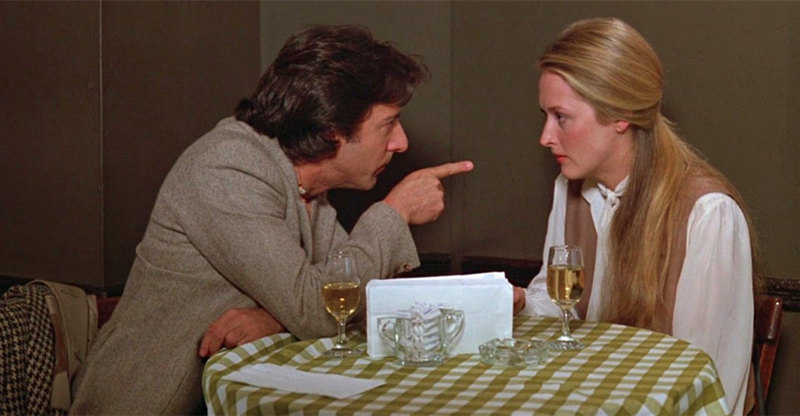Watching “At Long Last Love,” I wondered if this 1975 comedy-musical featuring the music of Cole Porter was the inspiration for “Across the Universe” (2007), with its all-Beatles soundtrack, or “Mamma Mia!” (2008) and its all-things Abba musical comedy-romance.
I also wondered if it was crowded in the Mount Hope Cemetery in Peru, Indiana where Porter is buried, or if the Jazz Age composer had room to roll over. If he happened to catch any part of Peter Bogdanovich’s homage, starring Burt Reynolds, Cybill Shepherd, Madeline Kahn, and Duilio Del Prete, he’d be turning like a chicken on a rotisserie, feeling more roasted than celebrated.
Though this is called the “Director’s Definitive Edition,” I would like to submit that the real definitive edition would have been reshot with a different cast. This one has practically no chemistry, and it’s not until mid-point in the movie—when Reynolds and Shepherd sing the title song, followed by a lively rendition of “Well Did You Evah!” performed by the quartet—that they finally manage to get the music right.
I don’t know if I can pinpoint the real culprit, but there seems to be plenty of blame to go around, starting with Ross Brown’s casting. None of the stars seems comfortable with musical comedy, and none of them are particularly good at it. In fact, the first three songs are positively grating.
Then there’s the arrangement of the Porter songs included in the film. We get an unadulterated instruments-only Porter medley during the title sequence, and as the songs play one after the other you find yourself thinking what a terrific composer he was. But the arrangements, which incorporate a lot of talking-singing and which interrupt the melody much of the time with over-expressiveness, make some of the songs unrecognizable and the rest difficult to listen to . . . except for those songs in the middle, which find the actors singing on key and with plenty of natural gusto.
As for the director’s part, the tone is all over the place, and decisions to film one individual or pair singing a song that’s followed by another chorus from different people, rather than using parallel editing, make the music drag on so you get tired of hearing it—kind of like listening to (or singing) the sixth verse of a hymn at a Lutheran church service.
Bogdanovich didn’t have nearly the same strong script he had to work with when he directed Shepherd in “The Last Picture Show” (1971) or paid tribute to “Bringing Up Baby” and screwball comedies in “What’s Up, Doc?” (1972), but that’s also his fault. Bogdanovich, who wrote the screenplay himself, could have used a Larry McMurtry or a Buck Henry, David Newman, and Robert Benton to make what’s obviously intended to be snappy patter work far better than it does here.
And with the music disappointing, we’re left with plot . . . and there really isn’t much to it. It’s a tale of the idle rich, with Reynolds playing a bored millionaire whose girlfriend is a Broadway actress (Kahn), whose roommate is an old-money heiress (Shepherd) with cash-flow problems. Enter an Italian gambler (Duilio Del Prete) and you have the second couple, which, at one point, turns into an uncomfortable swap. But no one is more uncomfortable than the audience.
When you see veteran character actors like John Hillerman (“Magnum, P.I.”) and Eileen Brennan (“Private Benjamin”) struggling, you know it’s trouble. Bogdanovich gets points for style, but not much for substance.
Video:
“At Long Last Love” is presented in 1.66:1 aspect ratio, in color that relies quite heavily on blacks and whites to reflect the black tie/white tie society in which the characters move. It’s not set in the ‘30s, and yet it evokes the ‘30s with the visual design. Black levels are sufficient, but edges can be a little soft and there’s more grain that HD-lovers are used to seeing. That said, I saw no real issues with the AVC/MPEG-4 transfer to a 25GB disc.
Audio:
The featured audio is an English DTS-HD MA Mono with subtitles in English SDH. It’s enough to support the vintage throwback look and sound of the film, with clear dialogue and surprisingly pure-toned music, given the Mono track.
Extras:
The only bonus features are the theatrical trailer and an isolated score that’s presented in DTS-HD MA 2.0 that’s mostly instrumental—though if you crank up the volume you can hear some singing in the backgrounds. Yet another curiosity on a very curious release.
Bottom line:
Give Bogdanovich credit for the concept, because paying homage to Cole Porter via a film that also celebrates the 1930s musical is actually a pretty fun idea. But as my wife remarked, it’s surprising that Reynolds had a career beyond daytime television. He’s simply not that good of an actor, and though Shepherd is a notch above, she too seems out of her element. But it’s not just the acting. There’s no chemistry, and very few Cole Porter songs are performed in such a way that you’d guess would make the old lyricist happy. “You’re the Top”? Not with this group doing the singing.


